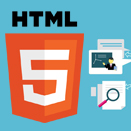

Transforming a decade old Flash based learning module into an asset, based on HTML5 is no child’s play. Doing it wrong or failing to do it has its own consequences – the risk of losing great learning content and the rising cost of creating new content from scratch, both pose a serious challenge for the learning and development sector (L&D). In this post we throw light on Flash to HTML5 conversion and ways in which all conversion related issues can be tackled.
Once Upon A Time – eLearning was All about Flash
We all know that Flash was once the most sought after digital multimedia platform available for developing a wide range of highly engaging learning content. Whenever there was a need for graphical assets and animations that could bring your games, presentations and videos to life, Flash was your best bet. Thanks to the flexibility it offered in design and for publishing the content on multiple browsers, Flash became the lifeline of media rich eLearning modules worldwide.
HTML in its earlier versions lacked the capability to support complicated video and graphics and this is why Flash gained popularity. However, this was a long time ago. The introduction of smartphones and tablets into our lives changed the destiny of Flash.
Flash has been designed to run animations at a resolution of 400X250, while the resolution of a browser is usually set at 401X251, which leads to flash resizing and re-rendering every single frame before it is played. On a desktop this isn’t a major concern as there is always a bit of spare memory available at all times, however on mobile devices the processor has to work really hard to present the Flash files as they are meant to appear, which only ends up draining much of your battery life.
This was what started the slow-death of Flash and the final set back came in the form of Apple’s decision of not providing support for Flash on iOS devices. Apple has been one of the technology trend shapers for many years now, and consumer behavior is highly influenced by the choices that key players in the industry make.
These days your smartphones or tablets are more likely to run web apps built on JavaScript, CSS and most commonly on HTML5, the current version of mark-up language, whose capabilities are far superior to that of Flash.
Will Flash to HTML Transformation Impact eLearning?
With so much of web content already being created using HTML5, we probably know the answer-“not much”. As new eLearning material is increasingly being created in HTML5, we can simply carry on as before. However, when it comes to legacy content, things can get a bit complicated.
There are over thousands of Flash based eLearning assets built over the last decade that can still be very useful to learners. Ignoring these legacy content files will only make them obsolete in the long run, which will be a great loss for students and educators. Rebuilding these Flash based legacy content from scratch in HTML5 will involve related costs and there will also be repetition of efforts.
Smart conversion is the best option available to save valuable resources from getting wasted.
Popular tools such as Captivate and Storyline can effectively re-publish old Flash based content into HTML5 based content. Though it might seem like a breeze to many, but it is not. Your content might be having numerous distinct Flash assets combined into one. Each of these will need to be re-purposed, especially if your legacy content wasn’t originally created using one of the adaptable tools. Here are a few guidelines that we believe can surely help you find the right course of action:-
Audit- Know your content well
Have a clear understanding of your existing Flash asset. Know what you have, value it holds and what all you can and must do to retain its worth. Also, be aware of the purpose it is going to solve and why it is important. Make sure that you have adequate knowledge about the technical specifications and the tools that were used to develop the original content.
Analyze- Understand your requirements
Find answers to:
- What is required to make your legacy content to meet the expectations of learners?
- Is there a need to redeploy such content to make it mobile friendly, or should it be made truly responsive that meets the requirement of any device or orientation?
- What are the functionalities you wish to retain?
- What all tools will you need to move forward with the conversion process?
Prioritize- Know your immediate needs
Once you have a clear understanding of your requirements you should begin by drawing a clear roadmap, mentioning your most critical needs, based on the number and size of your legacy content. Prioritizing your essential requirements will help you to have a systematic conversion process.
Convert- Get ready for conversion
As we have already mentioned, the conversion process may not be so complicated for those who have the right tools and content available, otherwise it can be a complex process. If you happen to be one of those lucky ones who are able to convert Flash files into HTML5 with the help of authoring tools, you will still have to pay attention to derive the right output that matches the current architecture. Conversion might involve trials and errors. However, if you take professional help, conversion can be made to look simple.
For more information on Flash to HTML5 conversion, write to us at info@suntecindia.com and our experts will get back to you shortly.

